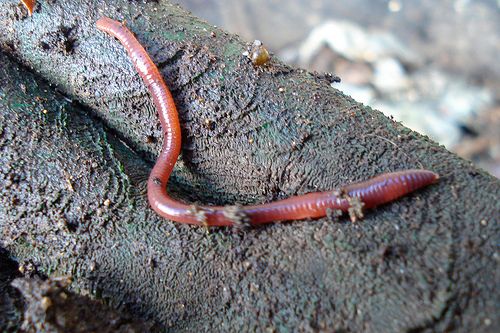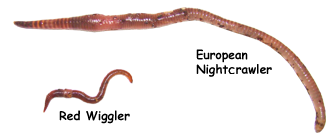Organic Composting with Red Wiggler Worms - Increase Your Yard's Development
Organic Composting with Red Wiggler Worms - Increase Your Yard's Development
Blog Article
Red Wiggler Worms Demystified: Opening the Secrets of Vermiculture for Greener Living and Nutrient-Rich Soil
In the realm of lasting methods for improving dirt top quality and promoting eco-conscious living, red wiggler worms play a pivotal yet commonly forgotten function. Red Wiggler Worms. Comprehending the ins and outs of caring for these worms, enhancing their atmosphere, and harnessing their castings can lead to a greener way of life and healthier soil for plants to thrive.
The Duty of Red Wiggler Worms
Red Wiggler worms play a crucial role in composting systems by efficiently breaking down organic matter right into nutrient-rich castings. These ravenous eaters eat a variety of natural materials, such as cooking area scraps, lawn waste, and paper products. As they feed, the worms' digestive system procedures break down the natural matter right into a penalty, dark, and nutrient-dense product referred to as worm spreadings or vermicompost.
The spreadings produced by Red Wiggler worms are highly valuable for dirt health and wellness and plant development. They are rich in essential nutrients like potassium, nitrogen, and phosphorus, which are vital for sustaining healthy plant growth. Furthermore, worm castings include valuable microorganisms and enzymes that assist enhance soil structure, increase water retention, and boost nutrient uptake by plants.
Advantages of Vermicomposting

Moreover, vermicompost, the nutrient-rich end product of vermicomposting, offers as an outstanding organic fertilizer and soil conditioner. It enhances soil structure, improves soil oygenation, and boosts dirt moisture retention. These properties add to healthier plants with stronger origin systems and much better resistance to diseases and insects. Vermicompost also improves the soil with vital nutrients like potassium, phosphorus, and nitrogen, promoting plant development and overall soil fertility.
Furthermore, vermicomposting supports sustainable horticulture practices by giving a chemical-free and natural option to synthetic fertilizers. Red Wiggler Worms. This eco-friendly strategy not only improves the dirt but also helps in reducing reliance on harmful chemicals, advertising a greener and much more sustainable means of horticulture
Establishing Up a Worm Container
When establishing a worm bin for vermicomposting, appropriate configuration is critical to make certain the success of the composting process. The very first step in establishing up a worm bin is picking an appropriate container.
After including the bed linens, introduce the red wiggler worms to the container. It is recommended to begin with a small number of worms and progressively boost as they increase. The worms should after that be provided with food scraps such as fruit and veggie peels, coffee grounds, and eggshells. It is vital to avoid adding meat, milk, oily, or salty foods to avoid bring in pests and producing undesirable odors.
Consistently keep Get More Info track of the moisture degrees and temperature level in the worm bin to make sure optimum conditions for the worms. With appropriate arrangement and maintenance, the worm bin will effectively convert organic waste into nutrient-rich compost for your plants and garden.
Collecting Worm Spreadings
To efficiently accumulate nutrient-rich worm spreadings from your vermicomposting system, a methodical harvesting technique is necessary. When it comes time to collect the worm castings, there are a few key steps to comply with to make sure a successful procedure. Quit adding fresh food scraps to one side of the worm bin for a couple of weeks prior to collecting. This encourages the worms to migrate to the side with fresh bedding and food, making it less complicated to dig the spreadings from the other side.

Troubleshooting Common Issues
Identifying and dealing with typical difficulties that may emerge during the vermicomposting process is vital for maintaining a healthy and balanced and effective worm bin. One usual issue that vermicomposters experience is overfeeding. Adding excess food scraps can lead to a buildup of dampness and level of acidity in the worm container, potentially hurting the worms. To avoid this, feed the worms in small amounts, making certain that the food scraps are sufficiently damaged down prior to including extra. One more concern is unpleasant odors rising from the worm container. Foul scents suggest anaerobic problems, typically brought on by overwatering or insufficient ventilation. To remedy this, adjust the wetness degrees by including completely dry bedding products like shredded paper or cardboard and rise aeration by turning the bedding consistently.
In addition, if the worm populace is decreasing or the worms show up unhealthy, it can be as a result of ecological stress factors such as severe temperatures or pH degrees. Monitoring these elements and making needed changes is essential for the wellness of the worms. By troubleshooting these common website link issues promptly, vermicomposters can make certain a successful and smooth vermicomposting process while preserving a thriving worm population.

Final Thought
In verdict, red wiggler worms play a critical function in vermiculture by damaging down organic matter right into nutrient-rich dirt. Establishing up a worm bin is necessary for successful vermiculture, and harvesting worm castings supplies important compost for gardening.
As they feed, the worms' gastrointestinal processes damage down the natural issue into a fine, dark, and nutrient-dense product known as worm spreadings or vermicompost.
The spreadings created by Red Wiggler worms are very valuable for soil health and plant development. Adding excess food scraps can lead to an accumulation of wetness and acidity in the worm bin, possibly hurting the worms.Furthermore, if the worm populace is declining or the worms appear unhealthy, it can be due to ecological stress factors such as extreme temperatures or pH degrees. Establishing up a worm bin is necessary for successful vermiculture, and gathering worm spreadings provides valuable garden compost for gardening.
Report this page